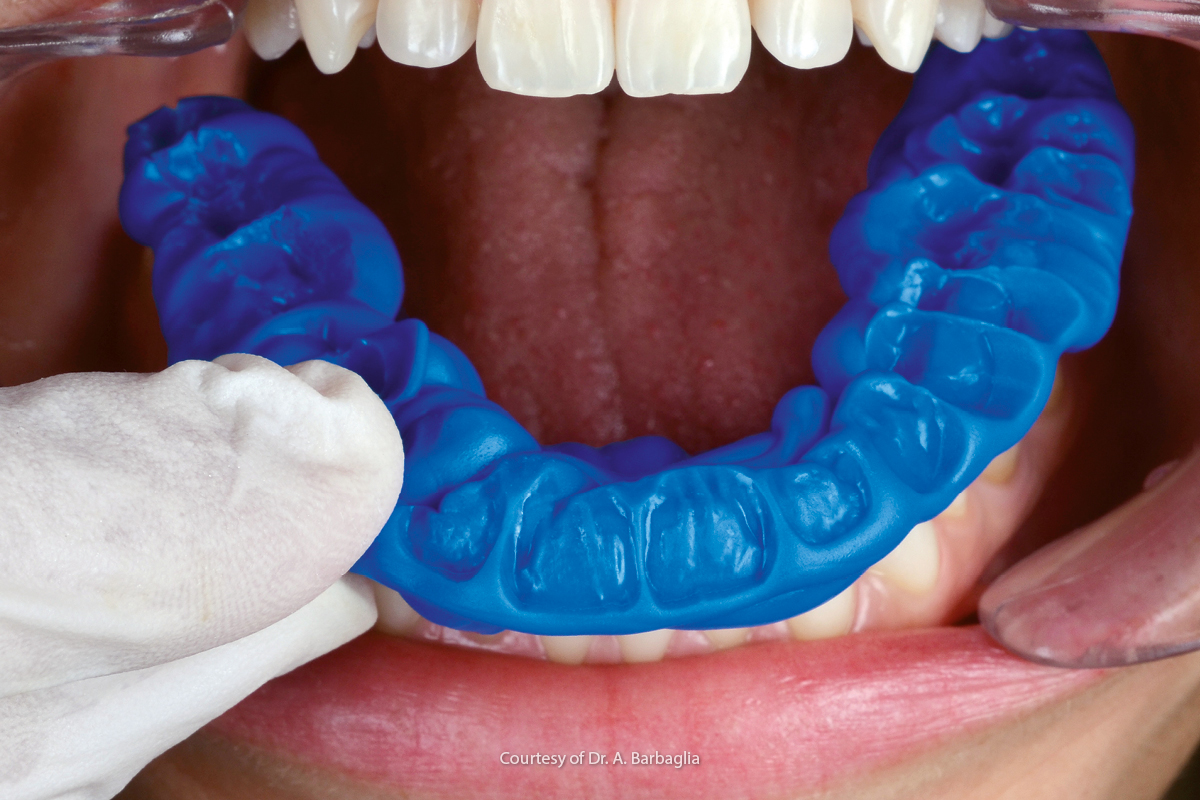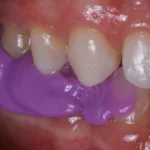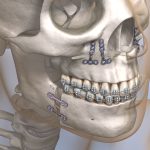
The “Glossary of Prosthodontics terms” defines bite registration as the recording of the positional relationship of the teeth or antagonist arches or as the positional recording of the teeth or jaws in relation to one another. (1)
Stable and accurate bite registration is fundamental for facilitating the examination of the patient’s occlusal relationships for both diagnostic and therapeutic purposes and makes it possible to fabricate indirect restorations on the basis of the desired occlusal scheme. (2)
The advantages of correct bite registration
Bite registration is not important just for recording a specific patient’s occlusal scheme. Indeed, in various clinical situations, dentists may need to alter a patient’s occlusal pattern with regard to both the vertical and sagittal dimension. After performing certain manoeuvres, the dentist can guide the patient into a new vertical or sagittal relationship and can therefore record his/her new occlusal relationships.
Using the bite registration of the modified pattern, the dental technician can articulate the situation the dentist expects in the chair and fabricate the prosthetic restorations or orthodontic appliances on the basis of the information provided by the dentist. (2)
Bite registration is important when we need to transfer the maxillomandibular relationship from our patient’s mouth to the articulator; correct transfer of the intermaxillary relationships onto the articulator eliminates the need for occlusal adjustments on the final prosthesis, which require greater time and generate higher costs. (3)
Correct bite registration therefore allows the dental technician to correctly articulate the models, and to study and set-up the restorations in accordance with the in vivo occlusal scheme of the patient or the occlusal scheme according to which the dentist intends to rehabilitate the patient.
The consequences of incorrect bite registration
Incorrect assembly of gypsum models on the articulator caused by the absence of bite registration, inaccurate bite registration or bite registration processing errors by the dental technician may have significant consequences in terms of the precision and accuracy of the final restoration.
Interocclusal discrepancies may make it necessary for the dentist to carry out many adjustments in the chair or even make it necessary to repeat the whole process. This type of error can easily translate into more time wasted by the patient, dentist and dental technician, greater costs for the practitioner and a lack of patient satisfaction. (2, 3)
Without the registration of the interocclusal relationships, particularly in certain situations, the dental technician may have to assume the occlusal scheme of the patient, which inevitably results in a loss of restoration precision and accuracy.
With an imprecise or distorted bite registration, or an unwanted intermaxillary relationship, on the other hand, the technician may have to base the rehabilitation on incorrect information and therefore produce prostheses that prove inconsistent at the time of delivery.
This reduced precision and accuracy, particularly with regard to the vertical dimension, makes it necessary for the dentist to significantly alter the prostheses intraorally or, even worse, to recommence the whole diagnostic-therapeutic process due to excessive imprecision.
Needless to say, this kind of unforeseen event can increase the time and therefore also costs for both the dentist and the dental technician and the increase in prosthesis delivery times could represent a major source of stress and mistrust for the patient.
When is bite registration indicated?
Basically, it is indicated in all those clinical situations in which the patient’s occlusal scheme cannot be consistently transferred by articulating the two models manually. If the patient has all his/her teeth and a normal scheme of intercuspation, articulating gypsum models becomes a consistent and precise process even without a bite registration. (3) If, on the other hand, we have a patient with missing teeth or teeth that do not afford intercuspation or feature abnormal occlusal relationships, the likelihood, when articulating the gypsum models, of obtaining an occlusal scheme that is inconsistent with that of the patient is significantly increased.
The most accurate method for articulating two gypsum models is the manual method, in which the intermaxillary relationship of greatest intercuspation is achieved manually. However, use of this method requires a sufficient number of teeth with good intercuspation. In these situations, the presence of a bite registration placed between the two gypsum models could lead to imprecision in the position of maximum intercuspation, resulting in an increase in the vertical dimension. (3)
When can it be said that a patient’s occlusal scheme “cannot be consistently transferred by articulating two models manually”?
In order to answer this question, we need to define the concept of “tripodism”. (2)
Certain vertical and horizontal relationships exist between a patient’s upper and lower arch. In dentate patients, the vertical and horizontal relationships are defined by the presence of the teeth themselves. A simple way to understand the concept of tripodism is to imagine a three-legged stool, which bears similarities with an occlusal scheme characterised by 3 suitably-distanced occlusal contacts, known as the occlusal tripod.
Removing one of the stool’s legs is like taking away one of the three interocclusal contacts, which may be the result of missing teeth or even merely the absence of contact of those teeth (as in the case of dental preparations). In the absence of an occlusal tripod, the two models may be articulated with a certain degree of inclination.
Basically, bite registration serves to replace the broken stool leg, i.e. the missing interocclusal contact that makes this tripod arrangement possible.
Horizontal stability depends on a good intercuspation of the teeth, which prevents the mutual rotation of the gypsum models. (4)
Bite registration is therefore essential whenever, in the clinical situation of maximum intercuspation, we note the absence of tripodism, due for instance to the absence of contacts on one quadrant.
Bite registration allows us to reacquire the tripodism necessary for precise and accurate articulation of the gypsum models by the dental technician.
Occlufast is the Zhermack solution for bite registration: Occlufast+, Occlufast+ Color, Occlufast CAD and Occlufast Rock are addition silicones that distinguish themselves for their unperceivable consistency, dimensional stability and thixotropy, each one with specific characteristics designed to satisfy the demands of clinical practice. The Occlufast range is available as 50 ml cartridges compatible with the 1:1 dispensers.
Bibliography
- Ferro, K. J., Morgano, S. M., Driscoll, C. F., Freilich, M. A., Guckes, A. D., Knoernschild, K. L., … & Twain, M. (2017). The glossary of prosthodontic terms.
- Thanabalan, N., Amin, K., Butt, K., & Bourne, G. (2019). Interocclusal Records in Fixed Prosthodontics. Primary dental journal, 8(3), 40-47.
- Soja Raju, D., Nair, V. V., Harshakumar, K., & Ravichandran, R. (2020). Interocclusal recording materials and techniques: A
- Freilich, M. A., Altieri, J. V., & Wahle, J. J. (1992). Principles for selecting interocclusal records for articulation of dentate and partially dentate casts. The Journal of prosthetic dentistry, 68(2), 361-367.
Do you want more information on Zhermack Dental products and solutions?
Contact Us




 Zhermack SpA has been one of the most important producers and international distributors of alginates, gypsums and silicone compounds for the dental sector for over 40 years. It has also developed solutions for the industrial and wellbeing sectors.
Zhermack SpA - Via Bovazecchino, 100 - 45021 Badia Polesine (RO), Italy.
Zhermack SpA has been one of the most important producers and international distributors of alginates, gypsums and silicone compounds for the dental sector for over 40 years. It has also developed solutions for the industrial and wellbeing sectors.
Zhermack SpA - Via Bovazecchino, 100 - 45021 Badia Polesine (RO), Italy.


